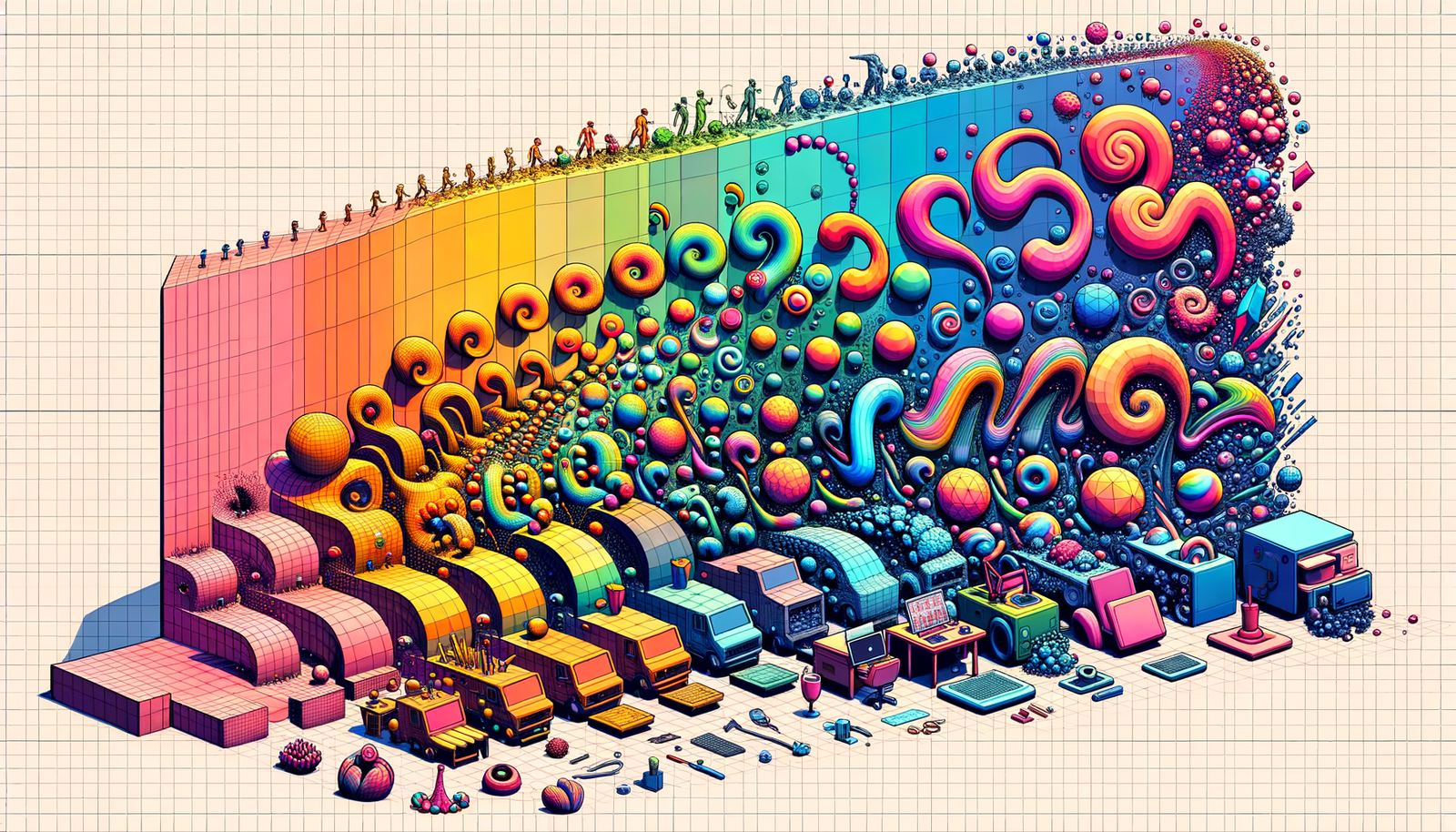Your Cart is Empty
Customer Testimonials
-
"Great customer service. The folks at Novedge were super helpful in navigating a somewhat complicated order including software upgrades and serial numbers in various stages of inactivity. They were friendly and helpful throughout the process.."
Ruben Ruckmark
"Quick & very helpful. We have been using Novedge for years and are very happy with their quick service when we need to make a purchase and excellent support resolving any issues."
Will Woodson
"Scott is the best. He reminds me about subscriptions dates, guides me in the correct direction for updates. He always responds promptly to me. He is literally the reason I continue to work with Novedge and will do so in the future."
Edward Mchugh
"Calvin Lok is “the man”. After my purchase of Sketchup 2021, he called me and provided step-by-step instructions to ease me through difficulties I was having with the setup of my new software."
Mike Borzage
Design Software History: Evolution of Surface Modeling: From Bézier Curves to AI-Driven Design
July 10, 2024 4 min read


The History of Surface Modeling Techniques
Early Developments in Surface Modeling
Surface modeling has been a fundamental aspect of design and engineering, primarily due to its ability to represent complex shapes and surfaces that solid modeling cannot handle with the same elegance. While solid modeling focuses on the volume and physical properties of objects, surface modeling emphasizes the creation of smooth, intricate surfaces. This differentiation is crucial in industries where aesthetics and aerodynamics are paramount, such as automotive and aerospace.
The foundations of surface modeling can be traced back to the pioneering work of individuals like Pierre Bézier and Paul de Casteljau. Bézier, a French engineer working at Renault, developed the Bézier curve, a parametric curve that has become a cornerstone in computer graphics and design. Concurrently, Paul de Casteljau at Citroën formulated a similar algorithm, now known as the de Casteljau algorithm.
The early algorithms for curve and surface representation laid the groundwork for what would become standard techniques in computer-aided design (CAD). The introduction of Bézier curves and surfaces revolutionized the way designers could represent and manipulate complex shapes, leading to more sophisticated modeling capabilities.
The automotive and aerospace industries were among the first to adopt these techniques. Companies like Renault, Boeing, and General Motors recognized the need for precise, smooth surfaces in the design of car bodies and airplane fuselages. These industries developed proprietary tools and techniques to meet their specific requirements, contributing significantly to the advancement of surface modeling.
Mathematical Foundations and Algorithms
The development of spline-based approaches marked a significant milestone in surface modeling. Early on, cubic splines were used, but they had limitations in terms of flexibility and control. To address these issues, mathematicians like Carl de Boor and I.J. Schoenberg contributed to the development of B-splines and NURBS (Non-Uniform Rational B-Splines). NURBS, in particular, provided a powerful tool for representing a wide range of shapes with great precision.
Advanced surface representations, such as subdivision surfaces, further enriched the toolkit available to designers. Pioneered by computer graphics experts Ed Catmull and James Clark, subdivision surfaces allowed the creation of smooth, detailed surfaces from coarse polygonal meshes. These techniques found applications not only in industrial design but also in computer graphics, enabling the creation of realistic characters and environments in films and video games.
Geometric continuity, specifically G1 and G2 continuity, is crucial in surface modeling. These concepts ensure smooth transitions between surfaces, which is essential for aesthetic and functional reasons. Mathematical models and algorithms have been developed to guarantee geometric continuity, allowing designers to create complex surfaces with seamless connections.
- G1 Continuity: Ensures that the tangents of two surfaces are aligned at their boundary.
- G2 Continuity: Extends G1 continuity by also aligning the curvatures at the boundary, resulting in even smoother transitions.
Algorithms ensuring geometric continuity have become integral to surface modeling software, enabling the creation of intricate and aesthetically pleasing designs.
Software Evolution and Technological Advancements
The emergence of commercial CAD systems in the late 20th century marked a significant advancement in surface modeling. Early CAD software such as CATIA, Unigraphics, and SolidWorks integrated surface modeling tools, making these capabilities accessible to a wider range of industries. The impact on sectors like automotive, aerospace, and consumer products was profound, as designers could now create and manipulate complex surfaces with greater ease and precision.
Technological milestones in the development of interactive and real-time modeling capabilities further enhanced the user experience. As computing power and graphical interfaces improved, designers could interact with their models in real time, making the design process more intuitive and efficient. Modern graphics hardware and software libraries, such as OpenGL, played a significant role in enabling these advancements.
Several companies and software packages have been instrumental in advancing surface modeling. Dassault Systèmes, with its flagship product CATIA, has been a leader in the industry, particularly in automotive and aerospace design. Siemens, through its NX software, and PTC with Creo, have also made significant contributions.
- Alias/Wavefront: Pioneered advanced surface modeling technologies, later acquired by Autodesk.
- Autodesk: Brought advanced surface modeling capabilities to a broader audience with products like Maya and Alias.
- Open-source initiatives: Tools like Blender have democratized access to powerful surface modeling tools.
The contributions of smaller players and open-source initiatives have also been noteworthy, expanding access to advanced surface modeling tools and fostering innovation through collaborative efforts.
Current Trends and Future Directions
Surface modeling continues to evolve, integrating with other technologies to enhance design workflows. One notable trend is the role of surface modeling in the additive manufacturing (3D printing) revolution. The ability to create intricate, customized surfaces is crucial for the success of 3D printing, and surface modeling tools are integral to this process.
Collaboration tools and cloud-based solutions are also enhancing surface modeling workflows. By enabling real-time collaboration and access to powerful computing resources, these technologies are transforming how designers work together and share their creations. Integration with simulation software for stress, thermal, and fluid analysis is another area where surface modeling is making a significant impact, allowing for more comprehensive and informed design decisions.
The application of AI and machine learning in surface modeling is an emerging trend with significant potential. AI algorithms can generate and optimize surface models, predict errors, and suggest corrections, streamlining the design process. Machine learning techniques are being used to analyze large datasets, providing insights that can improve the accuracy and efficiency of surface modeling.
Looking to the future, we can expect continuous improvements in algorithm efficiency and accuracy. The potential impact of quantum computing on complex surface modeling tasks is an exciting prospect, as it could revolutionize the speed and capabilities of these processes. Additionally, the integration of augmented and virtual reality into surface design processes could offer new ways for designers to interact with and visualize their models.
In conclusion, the history of surface modeling techniques is rich with innovation and technological advancements. From the early contributions of pioneers like Pierre Bézier and Paul de Casteljau to the integration of AI and machine learning, surface modeling has continually evolved to meet the needs of designers and engineers. As we look to the future, the possibilities for further advancements are both exciting and limitless.
Also in Design News

Revit Tip: Precise Property Boundaries and Site Component Placement in Revit
December 24, 2025 2 min read
Read MoreSubscribe
Sign up to get the latest on sales, new releases and more …




